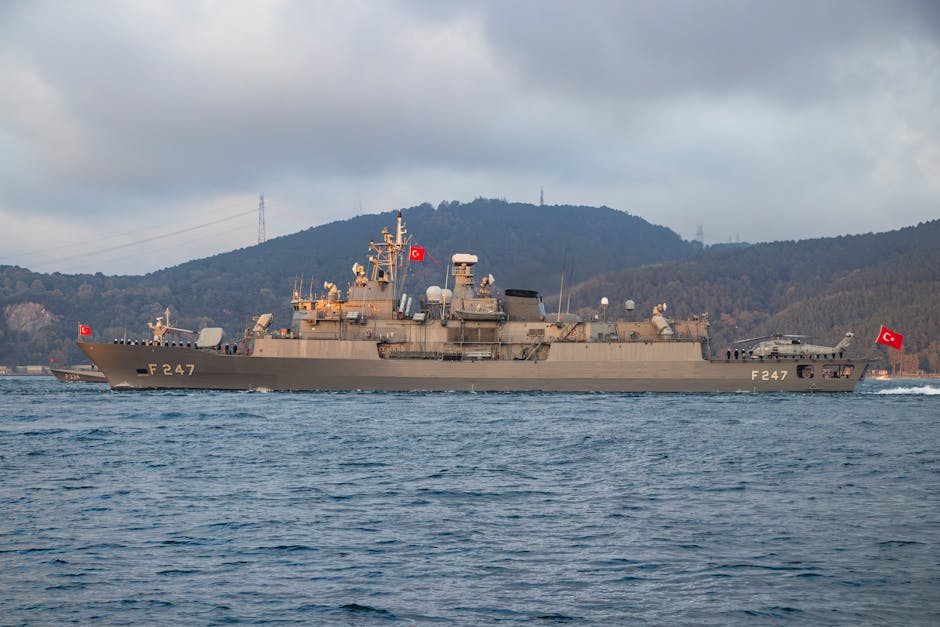Australia's Strategic Leap: The Acquisition of Mogami-Class Frigates

Australia's Strategic Leap: The Acquisition of Mogami-Class Frigates
In a historic move signaling a robust strategic pivot in the Indo-Pacific, Australia has chosen Mitsubishi Heavy Industries (MHI) of Japan to supply its Royal Australian Navy with up to 11 Mogami-class frigates. This move not only represents the largest warship export deal for Japan but also marks a significant overhaul of Australia's naval capabilities, aligning with broader geopolitical shifts in the region.
Overview of the Contract
**Contract Details:** The agreement, valued at approximately A$10 billion (US$6.5 billion), encompasses the construction of 11 advanced Mogami-class frigates, designed to replace the ageing Anzac-class fleet. Noteworthy is the phased construction approach—while the first three ships will be built in Japan, the remainder will be locally produced in Western Australia, fostering domestic defense industrial growth.
**Strategic Implications:** This deal is pivotal as MHI’s Mogami-class ships are equipped with cutting-edge features like a 32-cell vertical launch system, stealth design, and a significantly reduced crew requirement due to automation. These enhancements are crucial as they augment Australia’s maritime defense capabilities amid rising regional tensions.
Comparative Analysis: Mogami-class vs. MEKO A-210
During the tender process, MHI's Mogami-class was in competition with Germany’s TKMS and its MEKO A-210 proposal. **Technical Superiority:** The Mogami-class's advanced stealth capabilities and automation were seen as superior, aligning better with Australian strategic defense needs that prioritize high endurance, multirole features, and lower manpower costs.
**Strategic Fit:** The selection of the Japanese model also enhances the strategic ties between Japan and Australia, vital for regional security frameworks involving other allies like the United States.
Defense Industry and Bilateral Ties
**Economic and Industrial Impact:** The localized production of eight frigates in Australia is set to significantly boost local employment and technological expertise in shipbuilding in Western Australia.
**Enhanced Bilateral Relations:** From a geopolitical viewpoint, this project is set to deepen defense and economic relationships between Japan and Australia, offering a model of international cooperation for others in the Indo-Pacific region.
As Australia embraces a new era in naval capabilities, its strategic partnerships will be critical in shaping a stable, secure maritime domain in the Indo-Pacific, reflecting a shared commitment to peace and stability.
Geopolitical Implications and Future Projections
**Regional Security:** The frigates are not merely tools for national defense but pivotal assets in Australia’s strategy to ensure security in increasingly contested maritime boundaries. The enhanced capabilities of the Mogami-class will be crucial for Australia in safeguarding trade routes and maintaining regional stability.
**Future Collaborations:** Looking ahead, the success of this procurement could set the stage for further cooperation on defense technologies, including potential areas like autonomous systems and advanced missile technologies, reflecting mutual interests in safeguarding the Indo-Pacific.
Conclusion: A Strategic Vision for Tomorrow
The acquisition of the Mogami-class frigates is a forward-thinking move that places Australia at the forefront of naval innovation and regional defense strategy. With these frigates, Australia not only upgrades its naval capabilities but also solidifies its position as a key player in maintaining regional security and stability. The successful integration of these frigates into Australia's fleet by 2030 will undoubtedly be a cornerstone of the country's defense strategy for decades to come.
